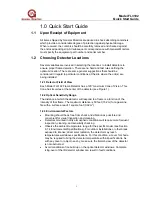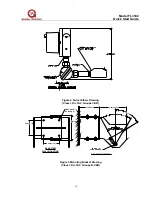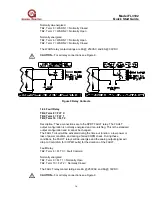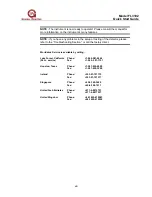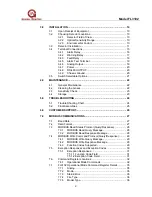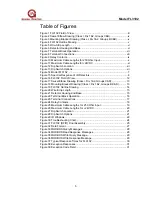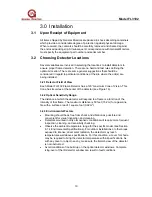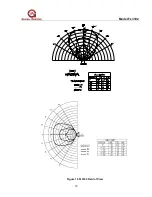
Model FL3102
Quick Start Guide
x
1.4.4 Alarm Reset Terminal
TB1, Term 3 = RESET
The RESET, when activated, returns a latched ALARM and/or WARN output,
that is no longer valid, to its original state. For this RESET function, place one
contact of a SPST normally open momentary switch to TB1 Terminal 3 and the
other contact to DC COM (the detector’s common). To activate, just press and
release the switch.
1.4.5 Alarm Test Terminal
TB1, Term 4 = ALARM TEST
By connecting one contact of a SPST normally open momentary switch to TB1
terminal 4 and the other contact to DC COM (the detector’s common) the user
can test the alarm outputs of the Flame Detector by activating this switch for one
to eight seconds depending on the alarm time delay setting. The Alarm Test will
activate the WARN and ALARM relay outputs as well as the appropriate analog
output. The Flame Detector will remain in this state until the switch is released.
The latching WARN and/or ALARM will have to be RESET manually. The Auto-
test feature cannot be daisy chained between two or more FL3102 Flame
Detectors.
1.4.6 Analog Output
TB1, Term 5 = 0 - 20mA
(Analog Output)
The 0 to 20mA output is a current signal that corresponds to following:
FAULT signal:
.0 to 0.2mA
COPM Fault signal:
2.0 + 0.2mA
Ready signal:
4.0 + 0.2mA
WARN signal:
16.0 + 0.2mA
ALARM signal:
20.0 + 0.2mA
The maximum analog output load is 600 ohms.
Cable Requirements:
For interfacing with 250 ohm input impedance devices, the following maximum
cable lengths apply (maximum 50 ohm loop):
AWG
FEET
METERS
14 9000 2750
16
5800
1770
18 3800 1160
20
2400
730
22 1700 520
Figure 10 Maximum Cable Lengths
for 250 Ohm Input





